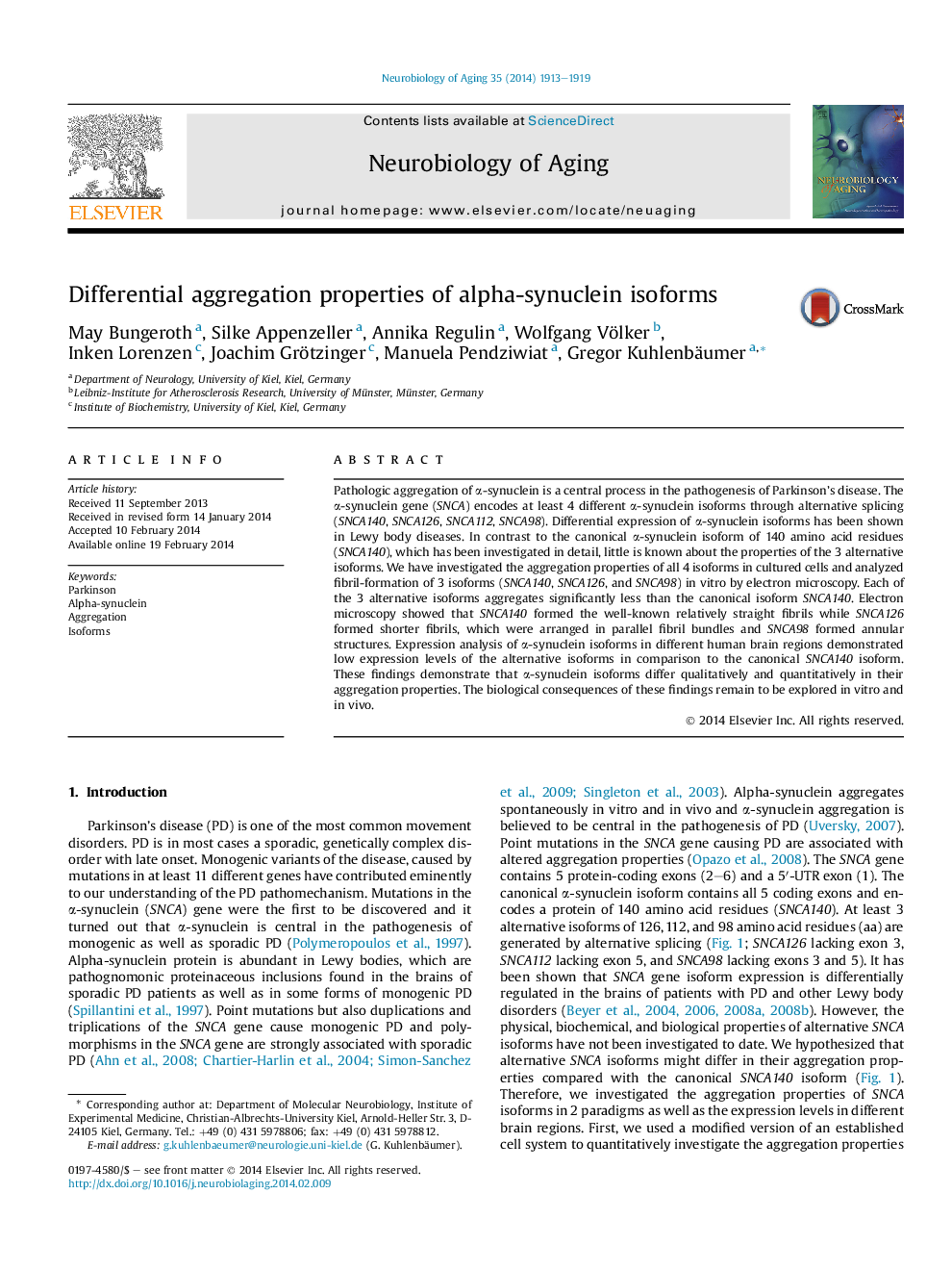| Article ID | Journal | Published Year | Pages | File Type |
|---|---|---|---|---|
| 6805779 | Neurobiology of Aging | 2014 | 7 Pages |
Abstract
Pathologic aggregation of α-synuclein is a central process in the pathogenesis of Parkinson's disease. The α-synuclein gene (SNCA) encodes at least 4 different α-synuclein isoforms through alternative splicing (SNCA140, SNCA126, SNCA112, SNCA98). Differential expression of α-synuclein isoforms has been shown in Lewy body diseases. In contrast to the canonical α-synuclein isoform of 140 amino acid residues (SNCA140), which has been investigated in detail, little is known about the properties of the 3 alternative isoforms. We have investigated the aggregation properties of all 4 isoforms in cultured cells and analyzed fibril-formation of 3 isoforms (SNCA140, SNCA126, and SNCA98) in vitro by electron microscopy. Each of the 3 alternative isoforms aggregates significantly less than the canonical isoform SNCA140. Electron microscopy showed that SNCA140 formed the well-known relatively straight fibrils while SNCA126 formed shorter fibrils, which were arranged in parallel fibril bundles and SNCA98 formed annular structures. Expression analysis of α-synuclein isoforms in different human brain regions demonstrated low expression levels of the alternative isoforms in comparison to the canonical SNCA140 isoform. These findings demonstrate that α-synuclein isoforms differ qualitatively and quantitatively in their aggregation properties. The biological consequences of these findings remain to be explored in vitro and in vivo.
Related Topics
Life Sciences
Biochemistry, Genetics and Molecular Biology
Ageing
Authors
May Bungeroth, Silke Appenzeller, Annika Regulin, Wolfgang Völker, Inken Lorenzen, Joachim Grötzinger, Manuela Pendziwiat, Gregor Kuhlenbäumer,
